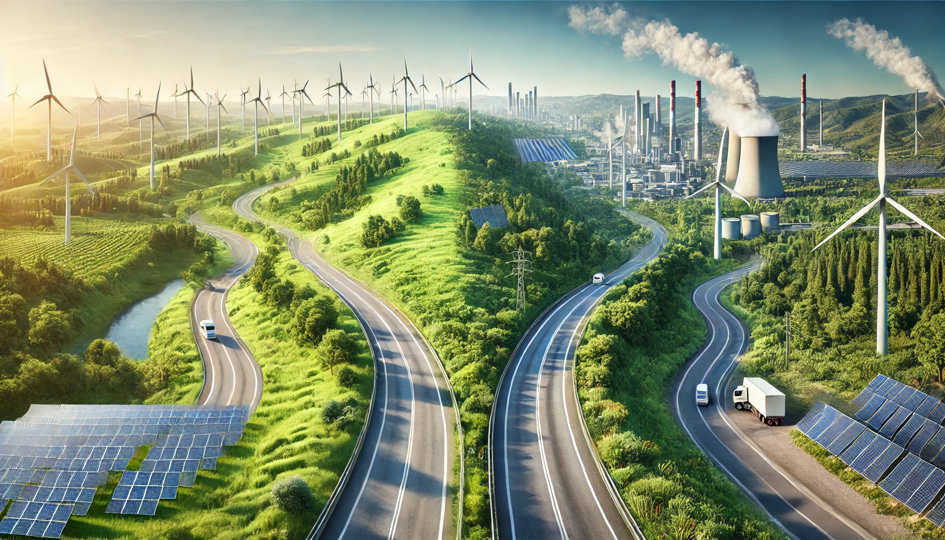
The global energy transition is no longer a question of “if” but “when.” As the world grapples with the impacts of climate change, economic shifts, and evolving technological landscapes, the move towards a cleaner, more sustainable energy system is inevitable. However, the speed and scale of the transition remain hotly debated. Two primary camps have emerged, each with distinct viewpoints on how quickly fossil fuels will be replaced by renewable energy sources.
On one side, there are the “Rapid Transition Advocates,” who believe the transition should and can happen swiftly, driven by technological advancements, market forces, and supportive policy environments. On the other, there are the “Gradual Transition Realists,” who argue that while the transition is happening and is necessary, it will likely unfold over a much longer time horizon due to a range of practical, economic, and political challenges.
The Case for a Rapid Energy Transition
Proponents of a rapid energy transition argue that a swift decline in fossil fuel usage is both achievable and necessary. Advocates are characterized by a high level of optimism, driven by recent trends in technology, policy, and market dynamics.
1. Technological Advancements: The costs of renewable energy technologies, such as solar and wind, have plummeted over the past decade, making them increasingly competitive with fossil fuels. Innovations in battery storage, grid management, and energy efficiency are enhancing the reliability and scalability of renewables. As these technologies continue to improve, they create a feedback loop that accelerates the shift away from fossil fuels.
2. Policy Support and Market Dynamics: Governments worldwide are implementing policies to support the transition, including subsidies for renewables, carbon pricing mechanisms, and stricter emissions regulations. Corporate commitments to sustainability and net-zero targets are also pushing markets towards cleaner energy. These forces will create a tipping point where renewable energy becomes the default choice, rapidly displacing fossil fuels.
3. Economic and Environmental Benefits: A faster transition to renewable energy promises significant economic and environmental benefits. Job creation in the clean energy sector, reduced healthcare costs from lower pollution, and the mitigation of climate risks are seen as powerful motivators for a rapid transition. The question is not whether we can transition quickly, but how fast we scale renewable solutions to meet global demand.
The Case for a Gradual Energy Transition
Proponents of a rapid energy transition argue that a swift decline in fossil fuel usage is both achievable and necessary. Advocates are characterized by a high level of optimism, driven by recent trends in technology, policy, and market dynamics.
On the other hand, the “Gradual Transition Realists” contend that while the move towards renewable energy is inevitable, it will take much longer than the Advocates predict. The Realists base their argument on several critical factors that could slow down the pace of change.
1. Historical Precedents and Scale: History shows that major energy transitions are inherently slow and complex. The transition from wood to coal, and then from coal to oil, took well over a century each. The existing global energy system is heavily embedded with fossil fuels, and replacing this system will require massive infrastructural changes across multiple sectors, including transportation, industry, and residential energy use.
2. Technical and Economic Challenges: The shift to a renewable energy system involves significant technical and economic challenges. Upgrading the grid to accommodate renewable sources, developing energy storage solutions to deal with intermittency, and creating new infrastructure are all costly and time-consuming. Moreover, the production of renewable technologies currently relies on critical minerals like lithium, cobalt, and rare earth elements, which are subject to supply chain and geopolitical risks. These challenges make it unlikely that the transition will occur quickly.
3. Political and Social Realities: Energy transitions are not just technical; they are deeply political and social. Different countries have varying levels of dependency on fossil fuels, and there is resistance from regions and industries heavily invested in the current system. Additionally, public acceptance of new technologies, such as electric vehicles and renewable energy sources, varies widely. The complexities of these political, economic, and social realities suggest that the transition will unfold gradually over many decades.
Who’s Going to be Right?
While the growth in clean energy capacity has consistently exceeded the International Energy Agency’s projections, energy demand is also increasing. The good news is that most of the incremental increase in electricity demand is being taken up by new clean energy capacity. The bad news is that some incremental demand increase is being taken up by fossil fuels, particularly natural gas. And therein lies the key. For fossil fuel usage to fall (not simply peak), the generation capacity from clean energy must not only satisfy the incremental demand increase, but also eat into existing fossil generation, first from coal, then natural gas. And EV adoption must move faster, particularly in the U.S., to cause oil demand to decline. The energy transition will truly ignite when clean energy not only meets 100% of demand growth, but when it starts to replace existing fossil fuel infrastructure.
That said, the energy landscape is evolving rapidly, and technological breakthroughs, policy shifts, or the social reaction to physical climate impacts could accelerate the transition faster than anticipated. The truth is that no one knows for certain how quickly the transition will happen, as the factors driving its speed and scale are themselves highly uncertain.
What’s Next? Dealing with Uncertainty
Given the uncertainty surrounding the speed of the energy transition, how should investors position their portfolios?
In our next blog, we will explore various strategies that institutional investors can use to manage the risks associated with a faster-than-expected transition. From derivatives to asset reallocation, we will provide actionable insights on how to build a portfolio that is resilient in the face of such uncertainty.
Read Part 2 of the speed and scale of the energy transition series:
Navigating the Uncertainty of the Energy Transition: Strategies for Institutional Investors

Drew Haluska
Senior Energy Transition Analyst
FFI Solutions

David Root
Head of Product Management
FFI Solutions

